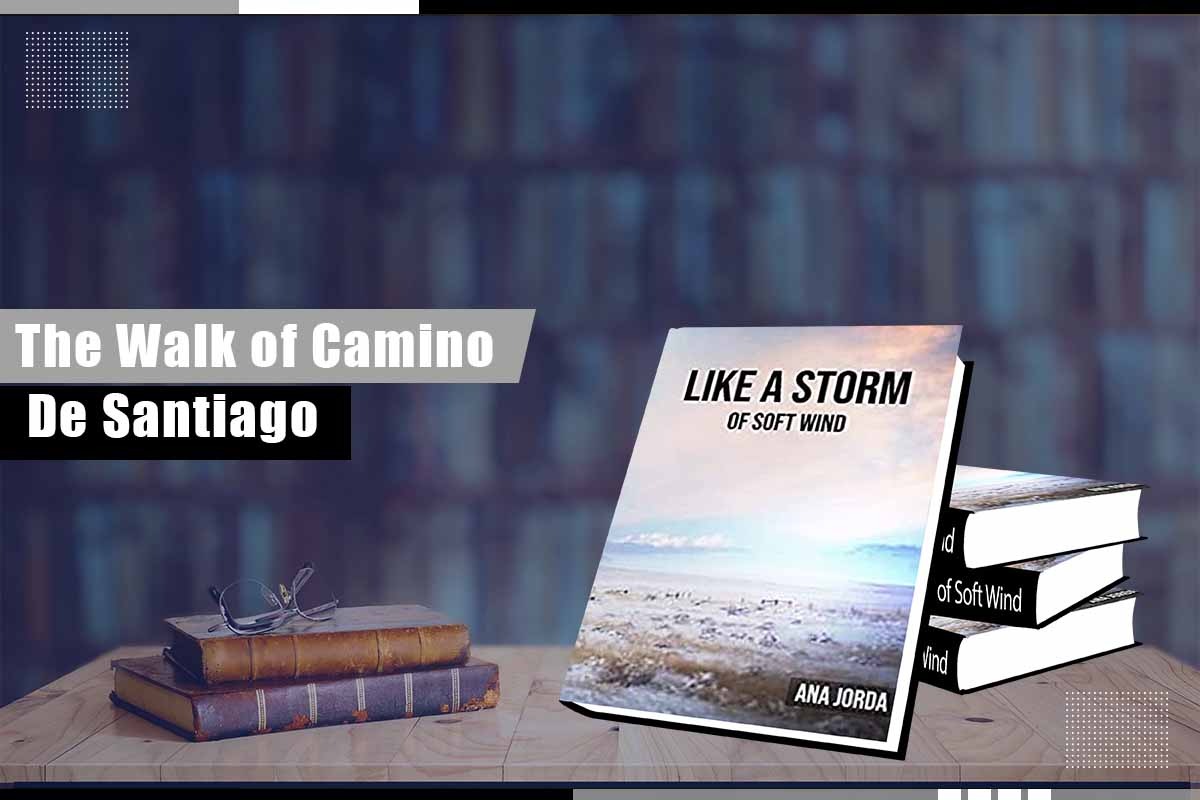The Camino de Santiago is a bucket list trip for many people, whether they consider themselves spiritual or not. But how did the Camino de Santiago become so famous among modern travellers, and what do we know about the Camino’s history?
Every year, hundreds and thousands of people walk the Camino de Santiago. This pilgrimage, which attracts people from all walks of life, captivates everyone who participates. Initially, the Camino was responsible for one of Europe’s most significant migrations.
Pilgrims would undertake the long journey to Galicia’s majestic cathedral at Santiago de Compostela, hoping to shorten their time in purgatory. Several book on spirituality and pilgrimage tell us a lot about Camino de Santiago and its origins. Ana Jorda’s poetry books about religion, spirituality and pilgrimage are available here.
The Origins Of Camino Pilgrimage
Best Books On Camino De Santiago tell us that the Camino de Santiago has its origins in the early ninth century (year 814) with the discovery of the tomb of the Iberian Peninsula’s evangelical apostle. Since its discovery, Santiago de Compostela has become a peregrination hub for the entire European continent. The Way was established at the time by a network of Roman roadways connecting the Peninsula’s neuralgic centres. The fantastic human flow that immediately headed towards Galicia resulted in the rapid appearance of several hospitals, churches, monasteries, abbeys, and towns along the road. The pilgrimage began to decline in the 14th century, owing to wars, plagues, and natural disasters.
Who Walks The Santiago Camino?
People of all ages, countries, and origins walk and pedal the Camino Routes every year. People from 190 different countries travelled to Santiago de Compostela in 2019. Many pilgrims walk the Camino de Santiago for religious or spiritual reasons, while many do it for the culture, legacy, or fitness challenge. According to Camino Statistics for 2020, about 54,000 pilgrims obtained their Compostela, with the majority of pilgrims coming from European nations and 76 % doing it for spiritual reasons.
How To Follow The Camino De Santiago Trail?
The Camino de Santiago pathways are marked with scallop shells and marks painted everywhere, such as trees, roads, and walls; follow the yellow arrows, and they’ll lead you to Santiago de Compostela.
The Route to Camino
The Camino is not tough to walk because most segments are very level and on decent routes. The biggest challenge is that few people walk for 10, 20, or 30 days straight. You discover more about your feet than you ever imagined. There are best books about Spain that provide information on what it’s like to walk one of the Caminos and to help you decide which one is best for you. Do not assume that you must walk the Camino Francés because everyone else does; the alternative routes are significantly less crowded and have much more to offer.
The Camino Francés, which covers 780 km (almost 500 miles) from St. Jean-Pied-du-Port near Biarritz in France to Santiago, is the most popular route (which gets very congested in mid-summer). Three main French routes feed into this route: the Voie de Tours, the Voie de Vezelay, and the Voie du Puy. The Voie d’Arles feeds the Camino Aragones, which intersects the Pyrenees at the Somport Pass, the Camino de Sant Jaume from Montserrat near Barcelona, the Ruta del Tunel from Irun, the Camino Primitivo from Oviedo and Bilbao, and the Camino de Levante from Valencia and Toledo all join it along its route. The Camino Inglés from Ferrol and A Corua, the Via de la Plata from Salamanca and Seville, and the Camino Portugues from Oporto are other Spanish routes.
People strolled out of their front doors and began going to Santiago during the Middle Ages, which is how the network formed. Nowadays, cheap air travel allows many people to fly to their starting point and complete different sections in consecutive years. Some individuals go out on the Camino for spiritual reasons; others discover spiritual reasons as they meet other travellers, hear pilgrim masses in churches, monasteries, and cathedrals, and experience the extensive infrastructure of buildings built for pilgrims over many centuries. There are best poetry book for kids in which kids read about Camino and more about it.

